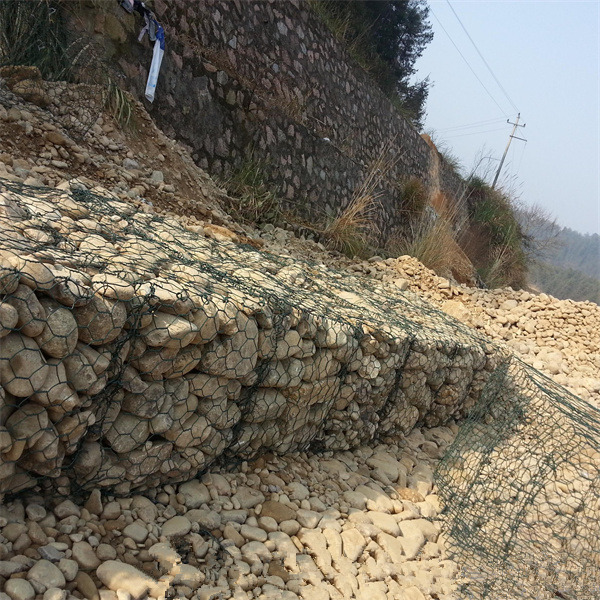Sep . 28, 2024 01:28 Back to list
Optimal Gabion Spillway Design for Effective Water Management and Erosion Control
The Best Gabion Spillway A Sustainable Solution for Erosion Control
Gabion spillways have emerged as an effective structural solution in managing stormwater runoff, controlling erosion, and enhancing ecological health along waterways. Comprising wire mesh baskets filled with stones or other materials, gabions provide stability, durability, and a sustainable alternative to traditional concrete spillways. This article explores the benefits of gabion spillways, their construction, and their optimal applications.
What are Gabion Spillways?
Gabion spillways are specially designed structures that direct excess water flow while minimizing erosion impacts on riverbanks, hillsides, and watershed areas. By utilizing natural materials, these spillways blend harmoniously into the environment, mitigating visual impacts while promoting aesthetic and ecological benefits. Their modular design allows for versatility in engineering, accommodating various shapes and sizes to suit specific site requirements.
Advantages of Using Gabion Spillways
1. Erosion Control One of the primary functions of a gabion spillway is to control soil erosion. The heavy stones packed within the wire mesh cages create a robust barrier that can withstand high flow velocities, reducing the force of water hitting the earth. This function is crucial in preventing the degradation of banks and stabilizing slopes.
2. Cost-Effectiveness Gabion structures are typically more cost-effective than traditional concrete alternatives. The materials used—such as rocks or recycled concrete—are often locally available, which reduces transport costs. Moreover, the construction process is generally simpler and requires less specialized labor, translating to lower overall project costs.
3. Flexibility and Modularity The modular nature of gabions allows for easy design modifications to accommodate specific site conditions. This flexibility is especially beneficial in areas with varying hydrological dynamics. If necessary, additional gabion units can be added to enhance flow resistance and increase stability.
4. Environmental Benefits Unlike rigid concrete spillways, gabion spillways promote natural water filtration and habitat creation. The gaps between the stones allow water to flow through, facilitating the growth of vegetation and providing a habitat for aquatic life. This characteristic supports biodiversity and helps maintain the ecological balance of the surrounding ecosystem.
best gabion spillway

5. Longevity and Durability Gabions are designed to withstand severe weather conditions, making them a long-lasting solution. The steel wire used in the baskets is often coated with protective materials to resist corrosion, ensuring that the structure can endure erosive forces over time.
Construction of Gabion Spillways
Constructing a gabion spillway involves several steps
1. Site Preparation The area must be assessed and cleared of debris, ensuring that the foundation is stable. Proper drainage considerations should be integrated into the initial site planning.
2. Basket Installation Gabion baskets are then placed in the desired configuration, typically on a gravel bed to facilitate drainage. These baskets can be filled with various materials, with natural stones being the most common choice, although recycled concrete and other aggregates can also be used.
3. Filling and Securing Once the baskets are positioned, they are filled with the selected material, and the tops are secured to prevent displacement. Metal ties may be used to fasten adjacent baskets and ensure overall stability.
4. Finishing Touches The structure may be covered with soil and vegetation to promote natural landscaping and further integrate the spillway into the environment.
Conclusion
Gabion spillways represent a sustainable and innovative approach to water management and erosion control. Their versatility, cost-effectiveness, and environmental benefits make them an ideal choice for various applications in civil engineering, particularly in vulnerable areas subject to erosion. As the demand for environmentally friendly infrastructure solutions increases, gabion spillways stand out as a practical option for engineers and environmentalists alike. Whether used alone or in combination with other erosion control measures, they contribute to the sustainable management of our vital water resources.
-
Wire Mesh Thickness Impact on Gabion Wall Load Bearing
NewsAug.12,2025
-
Ultimate Guide to Hexagonal Gabion Box
NewsAug.12,2025
-
Types of Rocks for Gabion Baskets Durability and Aesthetics
NewsAug.12,2025
-
Standard Gabion Box Sizes and Their Industrial Applications
NewsAug.12,2025
-
Easy Guide to Building Garden Gabion Cages at Home
NewsAug.12,2025
-
Drainage Solutions for Gabion Mesh Structures
NewsAug.12,2025
-
Visualizing Gabion 3D Integration in Urban Landscapes with Rendering
NewsJul.23,2025






